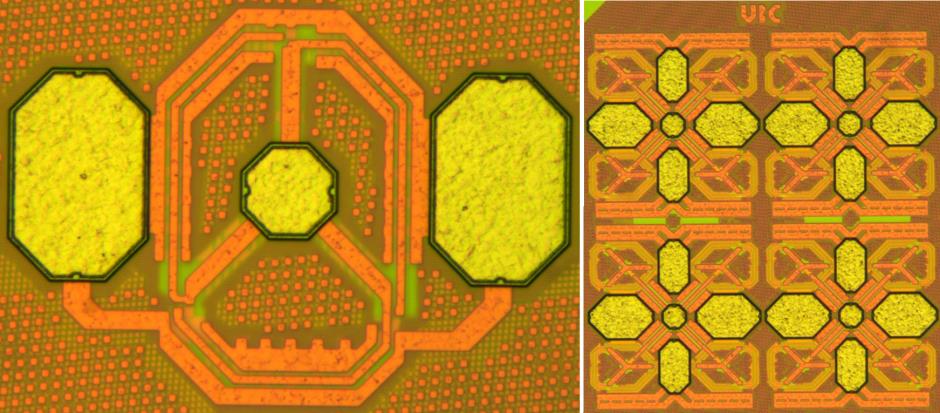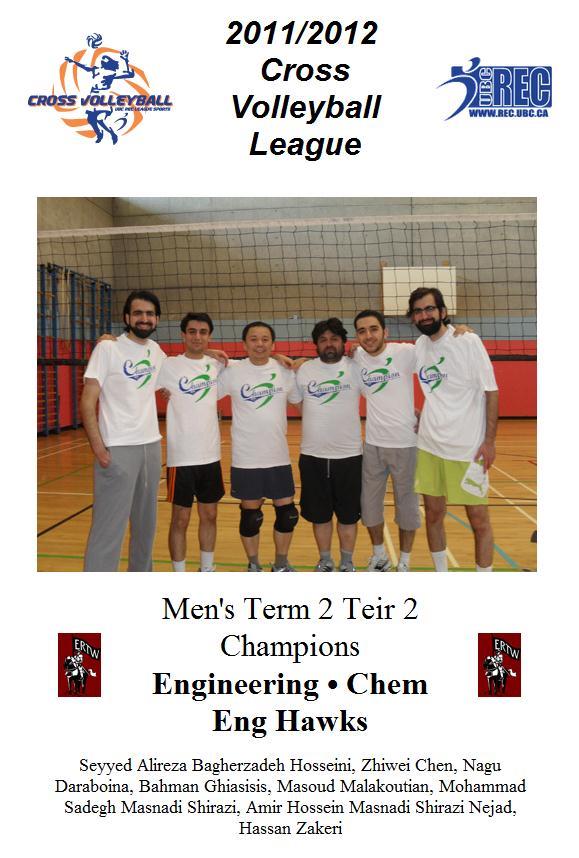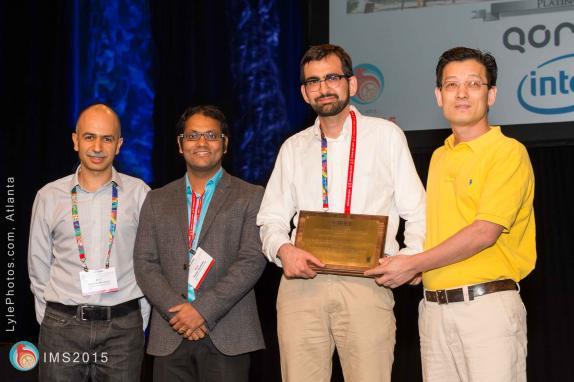1)
Link to UBC News :
https://soc.ece.ubc.ca/2015/06/16/
https://rfic-ieee.org/rfic-archive
3)
Cross Volleyball League
Chem Eng Hawks
(Men's Term 2 Teir 2 Champions)
Seyyed Alireza Bagherzadeh Hosseini, Zhiwei Chen, Nagu Daraboina, Bahman Ghiasisis, Masoud Malakoutian, Mohammad Sadegh Masnadi Shirazi, Amir Hossein Masnadi Shirazi Nejad, Hassan Zakeri
Best Student Paper Award at RFIC 2015
By rosales on June 16, 2015
Congratulations Amir Hossein Masnadi Shirazi, Amir Nikpaik, Reza Molavi, Shahriar Mirabbasi, and Sudip Shekhar for winning the Best Student Paper Award at IEEE RFIC 2015 ! Find out more: A Class-C Self-Mixing-VCO Architecture with High Tuning-Range and Low Phase-Noise for mm-Wave Applications, Amir Hossein Masnadi Shirazi, Amir Nikpaik, Reza Molavi, Shahriar Mirabbasi, and Sudip Shekhar News source
12)
Link to UBC News :
https://soc.ece.ubc.ca/2015/11/22/501/
Killam Scholarship Supports Research in Experimental Chip Design
Between microwave and infrared wavelengths is a tantalizing portion of the spectrum known as terahertz (THz), T-rays or submillimetre wavelengths. Ranging between 300 gigahertz to 3 terahertz this part of the spectrum is compelling for researchers because it has an array of potentially useful properties that have not been fully utilized.
THz wavelengths have already been used to transmit data 20 times faster than current WiFi in a laboratory setting and could reach speeds of 100 gigabits per second. This would be particularly useful for communications technologies where huge increases in data usage are anticipated. Terahertz frequencies also show potential for a wide range of imaging technologies. T-rays can pass through materials such as plastics and fabrics and possibly walls, making them useful for security screening. Terahertz frequencies can pass through the body safely because they are non-ionizing so they will not induce harmful chemical reactions in the body. T-rays can also clearly distinguish between densities of many tissues in the body making terahertz spectroscopy useful for medical imaging.
Using the terahertz bandwidth has one big challenge, our atmosphere, specifically water in our atmosphere. Described as the terahertz wall by Carter M. Armstrong, the deflection and absorption of T-waves by our atmosphere makes propagation over ten metres unfeasible with our current technology; the power needed for greater distances is too difficult and costly to generate. Even with this limitation, satellite to satellite communication could be greatly enhanced using the THz frequency spectrum because satellites are orbiting above the atmosphere. Furthermore, there are still many interesting applications within the ten-metre limit, such as medical imaging or short range WiFi communications, that can potentially benefit from THz operation. To make use of potential benefits of the THz energy spectrum scientists must design and develop reliable and economical ways to generate, propagate and receive T-rays.
One of this year’s Killam Doctoral Scholarship recipients has turned his mind to this challenge.
Graduate students Amir Hossein Masnadi Shirazi and Amir Nikpaik along with their co-supervisors, ECE Professors Sudip Shekhar and Shahriar Mirabbasi are working on a research approach that will use building blocks from existing chip manufacturing processes to develop efficient and cost effective THz signal generation and processing. During the first stage of this research, they will be studying the effects of using an efficient high-frequency oscillator to generate THz signals. They will then refine the signal by removing its sub-terahertz harmonic noise as well as assess the effectiveness of combining a number of weak THz generators to create a strong signal. In the final stage of Amir’s research, he will evaluate the efficacy of using the THz frequencies generated for imaging and sensing applications.
Amir’s ambitious research is supported by a Killam Doctoral Scholarship. Killam Doctoral Scholarships are the most prestigious awards available to graduate students at UBC. Approximately 15-20 awards are made each year to the top doctoral candidates in the Affiliated Fellowships Competition. The UBC Killam Doctoral Scholarships are provided annually from the Izaak Walton Killam Memorial Fund for Advanced Studies. Bo Zhuang, co-supervised by Robert Rohling and Purang Abolmaesumi, and Francis Therrien, supervised by Juri Jatskevich, are ECE graduate students who have received Killam Doctoral Scholarships in previous years and continue to be supported by the program.





